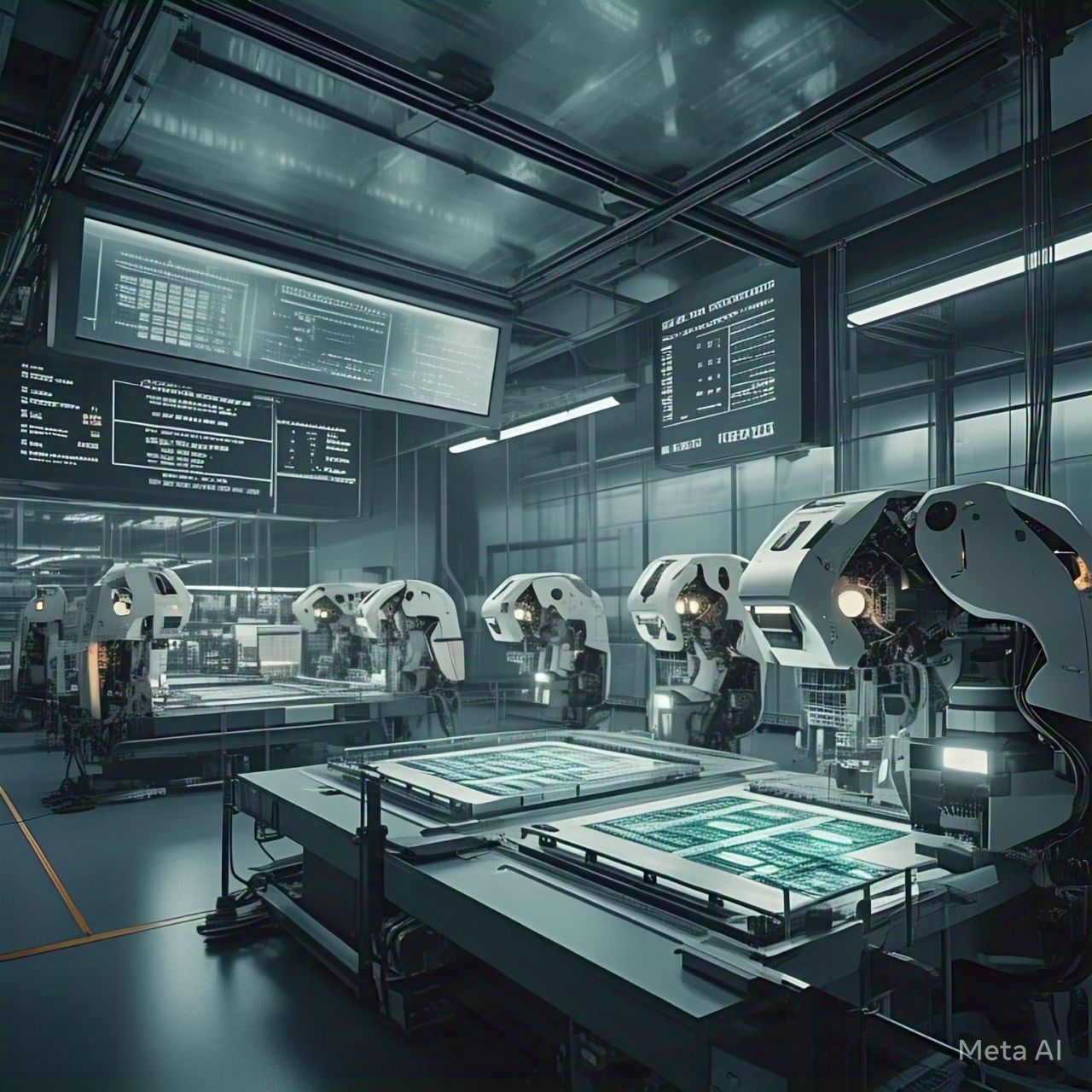Table of Contents
- Introduction
- Understanding Superconductivity in AI
- The Need for Faster Neural Networks
- How Superconductors Enhance AI Performance
- Key Advantages of Superconducting AI Chips
- Real-World Applications of Superconductivity in AI
- Challenges and Limitations
- Future Prospects of Superconducting AI Systems
- Conclusion
- FAQs
1. Introduction
Artificial Intelligence (AI) has revolutionized industries, from healthcare to finance, but its expansion is constrained by the processing limits of traditional semiconductor chips. Superconductors, known for their zero electrical resistance and ultra-fast signal processing, offer a breakthrough solution. By harnessing superconductivity, AI systems can achieve unparalleled speeds, minimal energy loss, and enhanced neural network capabilities. This article explores how superconducting technology is paving the way for AI’s next leap forward.
2. Understanding Superconductivity in AI
Superconductivity occurs when certain materials are cooled below a critical temperature, eliminating electrical resistance. This phenomenon enables high-speed, energy-efficient computing, ideal for AI processing. Josephson junctions, key components in superconducting circuits, facilitate ultra-fast switching speeds, making them well-suited for complex neural networks.
| Feature | Traditional Semiconductors | Superconductors |
|---|---|---|
| Energy Consumption | High | Extremely Low |
| Processing Speed | Limited | Near Quantum Speed |
| Heat Generation | Significant | Minimal |
| Scalability | Moderate | High |
| AI Model Training Time | Long | Reduced Drastically |
3. The Need for Faster Neural Networks
3.1 Exponential Growth in AI Complexity
State-of-the-art AI models like GPT-4 and DALL·E 3 require vast computational power. Traditional chips struggle to keep up with the rapid advancements in deep learning.
3.2 Energy Consumption Concerns
Data centers worldwide consume massive amounts of electricity, leading to high operational costs and environmental concerns. Superconductors, with zero electrical resistance, offer a viable solution.
3.3 Real-Time AI Processing
Industries such as autonomous driving, healthcare, and financial analytics demand real-time AI responses, necessitating ultra-fast, low-latency neural networks.
4. How Superconductors Enhance AI Performance
4.1 Faster Training of Neural Networks
Superconducting AI chips can process massive datasets at lightning speeds, reducing AI training time from weeks to mere days.
4.2 Efficient AI Inference
Inference, the process of making real-time predictions, is significantly enhanced with superconducting processors, making AI more responsive.
4.3 Enhanced Parallel Processing
Superconducting circuits allow multiple AI computations to occur simultaneously, vastly improving neural network efficiency.
4.4 Seamless Quantum-AI Integration
Superconductors are fundamental to quantum computing, enabling the development of AI-powered quantum systems that solve problems beyond classical computing capabilities.
5. Key Advantages of Superconducting AI Chips
5.1 Ultra-Fast Computation
Superconducting AI chips execute trillions of calculations per second, far outpacing traditional silicon processors.
5.2 Near-Zero Energy Loss
Due to their zero resistance property, superconductors consume minimal power, reducing the carbon footprint of AI operations.
5.3 Reduced Heat Emission
Unlike traditional semiconductors that require extensive cooling, superconductors operate without overheating, enhancing system longevity.
5.4 Scalability for Advanced AI Architectures
Superconducting AI processors support the rapid scaling of neural networks, making them suitable for next-generation AI models.
6. Real-World Applications of Superconductivity in AI
6.1 Autonomous Vehicles
Superconducting AI chips improve the real-time processing of sensor data, making self-driving cars safer and more efficient.
6.2 AI in Medical Diagnostics
Superconducting processors enable faster medical image analysis and disease detection, improving patient outcomes.
6.3 High-Frequency Trading and Financial Forecasting
Stock market predictions rely on AI models that process vast amounts of financial data instantly, where superconductors provide a significant advantage.
6.4 AI-Driven Aerospace and Defense Systems
Military and space applications benefit from superconducting AI chips, enabling advanced simulations, threat detection, and satellite data analysis.
6.5 Smart Cities and IoT
Superconducting AI can process urban data in real-time, optimizing traffic management, energy distribution, and public safety systems.
7. Challenges and Limitations
7.1 High Cost of Implementation
Developing and manufacturing superconducting AI chips require specialized materials and infrastructure, making them costly.
7.2 Cryogenic Cooling Requirements
Superconductors must be cooled to extremely low temperatures, requiring advanced cryogenic systems.
7.3 Integration with Existing AI Hardware
Most AI infrastructure is built for traditional processors, necessitating significant adaptation for superconducting AI chips.
7.4 Limited Commercial Availability
While research is advancing, superconducting AI chips are still in the early stages of commercial deployment.
8. Future Prospects of Superconducting AI Systems
8.1 Advances in High-Temperature Superconductors
Scientists are working on room-temperature superconductors, which would eliminate cooling challenges and accelerate adoption.
8.2 Hybrid AI Systems
The future may see AI processors combining traditional and superconducting components for optimized performance.
8.3 AI-Quantum Computing Synergy
As quantum computing progresses, superconducting AI chips will play a pivotal role in solving complex AI problems.
8.4 Industry Adoption and Investment
Tech giants like Google, IBM, and Microsoft are investing in superconducting AI research, accelerating mainstream adoption.
9. Conclusion
Superconductivity represents AI’s next leap forward, enabling unprecedented speed, energy efficiency, and scalability. While challenges like high costs and cooling requirements exist, ongoing advancements in material science and computing infrastructure are bringing superconducting AI chips closer to commercial reality. As AI applications continue to expand, superconductors will be instrumental in powering the next generation of intelligent systems.
10. FAQs
1. How do superconductors improve AI performance?
Superconductors eliminate electrical resistance, enabling faster computations, lower energy consumption, and minimal heat generation.
2. When will superconducting AI chips be commercially available?
While still in development, superconducting AI chips are expected to be commercially viable within the next decade.
3. What industries will benefit the most from superconducting AI processors?
Industries such as autonomous vehicles, healthcare, finance, defense, and quantum computing will see the most significant benefits.
4. What are the main challenges of using superconducting AI chips?
The biggest challenges include high manufacturing costs, extreme cooling requirements, and the need for infrastructure adaptation.
5. Can superconductors be used in quantum computing?
Yes, superconductors are essential for quantum computing, enabling ultra-fast AI-driven quantum systems.
6. How do superconductors contribute to sustainable AI?
By consuming significantly less power than traditional chips, superconductors help reduce the carbon footprint of AI data centers.




